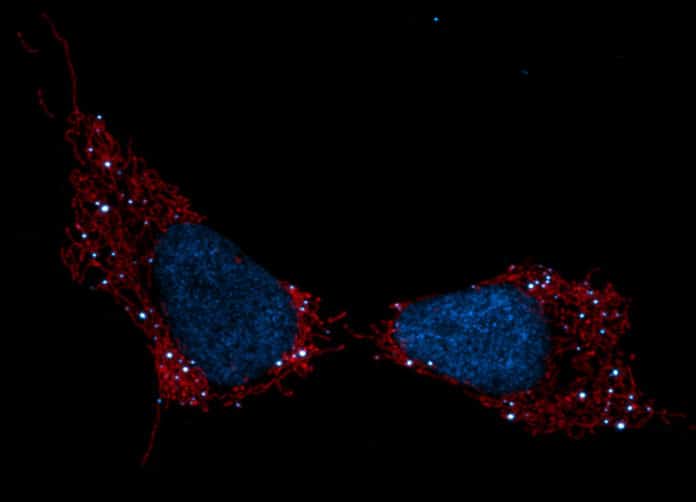Mitochondria, the powerhouses of the cell- are organelles that act like a digestive system that takes in nutrients, breaks them down, and creates energy-rich molecules for the cell.
A new study discovered a new role of mitochondria: it acts as molecular alarms when cells are exposed to stress or chemicals that can damage DNA, such as chemotherapy. Scientists suggest that mitochondria become the first line of defense in sensing DNA stress. It tells the rest of the cell, ‘Hey, I’m under attack, you better protect yourself.’
Mitochondria contain their genome, the mitochondrial DNA (mtDNA), which is located in the mitochondrial matrix. Now, scientists set out to determine what molecular pathways are activated by the release of damaged mtDNA into the cell’s interior.
They homed in on a subset of genes known as interferon-simulated genes, or ISGs, that are regularly enacted by the presence of viruses. In this case, scientists found the genes were a particular subset of ISGs turned on by viruses. And this same subset of ISGs is often found to be activated in cancer cells that have developed resistance to chemotherapy with DNA-damaging agents like doxyrubicin.
Doxyrubicin targets nuclear DNA to destroy cancer, yet scientists found that the also leads to the damage and release of mtDNA, which thus activates ISGs. This subset of ISGs, the group discovered, helps protect nuclear DNA from damage—and, therefore, causes increased resistance to the chemotherapy drug.
Gerald Shadel, a professor in Salk’s Molecular and Cell Biology Laboratory and the Audrey Geisel Chair in Biomedical Science, said, “Perhaps the fact that mitochondrial DNA is present in so many copies in each cell, and has fewer of its DNA repair pathways, makes it a very effective sensor of DNA stress.”
“Most of the time, he points out, it’s probably a good thing that the mtDNA is more prone to damage—it acts as a canary in a coal mine to protect healthy cells. But in cancer cells, it means that doxyrubicin—by damaging mtDNA first and setting off molecular alarm bells—can be less effective at damaging the nuclear DNA of cancer cells.”
“It says to me that if you can prevent damage to mitochondrial DNA or its release during cancer treatment, you might prevent this form of chemotherapy resistance.”
Scientists are now planning to study how mtDNA is damaged and released and which DNA repair pathways are activated by the ISGs in the cell’s nucleus to ward off damage.
Other authors on the study were Zheng Wu, Kailash Mangalhara, Alva Sainz, Laura Newman, Victoria Tripple and Susan Kaech of Salk; Sebastian Oeck, Lizhen Wu, Qin Yan, Marcus Bosenberg, Yanfeng Liu, Parker Sulkowski and Peter Glazer of Yale School of Medicine; Phillip West of Texas A&M College of Medicine; and Xiao-Ou Zhang of University of Massachusetts Medical School.
The work and the researchers involved were supported by grants from the National Institutes of Health, the Cancer Prevention and Research Institute of Texas, the Office of the Assistant Secretary of Defense for Health Affairs, the China Scholarship Counsel, the Salk Excellerators Postdoctoral Fellowship, and the George E. Hewitt Foundation for Medical Research Postdoctoral Fellowship.
The study is published in the journal Nature Metabolism.
